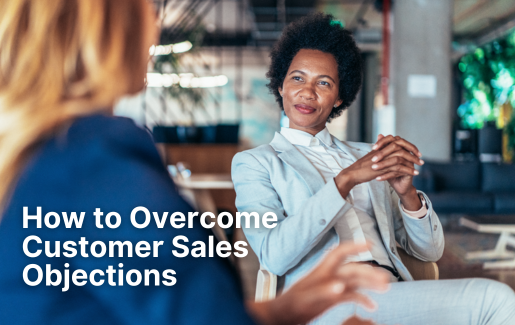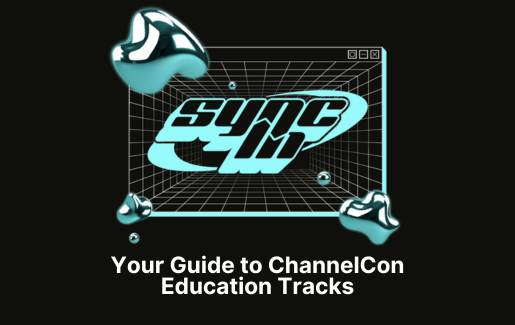 “You know, I just don’t think we can afford that.”
“You know, I just don’t think we can afford that.”
“Sorry, now is just not a good time—we already have a contract.”
“I think I need to run this by my boss first.”
There’s probably not an MSP in the world that hasn’t heard those lines when talking to customers or prospects about a new solution or service. Overcoming those and other objections is a challenge, but possible, if you know how to respond to keep the conversation going. It takes practice, preparation and maybe a little problem-solving, according to Hannah Lloyd, vice president of sales for InSoc, and Alex Smith, sales consultant at ConnectWise. The pair outlined an “ASK” methodology—acknowledge, (find the) source and keep (the conversation moving)—during a recent CompTIA Community – UK & Ireland meeting and follow-up Q&A webinar with MSPs.
“A lot of the objections I hear—and how they're handled—lead MSPs to say they lost them at the first hurdle or that they agree with what the customer is saying,” said Smith. “That doesn't give you the opportunity to really dive into the problem. So what to do instead of agreeing is acknowledge them. Say, ‘You know what, I hadn't considered that. Could you just run me through how that's representing for you. Or could you run me through how that's showing up for you.”
Acknowledging an objection lets the customer know that you’ve heard them and you’re ready and able to talk more about it and address it. You’re not saying you haven’t heard it before or you haven’t dealt with it before. You’re saying, “That’s something I'd like to learn more about,” according to Smith.
Next, the source component of the ASK methodology is doing discovery and understanding what's going on with your customer, Lloyd said. Ask questions like: When you've tried to solve this before, what was your experience? What worked? What didn’t? That will help you keep the conversation moving past any objections, Lloyd and Smith said.
Most customers have already researched—and even made a decision—on what they want to purchase before they engage with a sales representative.
“If you assume that a customer is pretty much there on what they need to make the decision, I need to start thinking about what's going to happen on their side when they say yes to a product and how do I join them on that conversation,” Smith said. “So when they say it's too expensive, what they’re saying to you really is, ‘I don't see the value in what you're saying to me and is it worth the time to either uproot what I've already got or make that shift and take my customers away from it.’”
To assist MSPs, Smith and Lloyd detailed three common objections and suggestions on how to respond and overcome them:
‘I Need a Free Trial and a Discount’
Free trials and discounts can help lure in clients—but they should be temporary and the customer needs to recognize that, according to Lloyd.
“Free trials can be great if it's purely product, and it's a very low cost to run it and you've got a definitive end date. When it comes to service, which has a higher cost and when you've got very good staff that you're paying a very good rate, their time is highly valuable to you. If that's offered for free or for a discount, that value very soon diminishes to the end client and it becomes very difficult to build that value up again when it comes to that 12-month or two-year renewal,” she said.
An alternative to steep discounts or free trials is offer multiple levels of service for MSPs, for an example an entry-level solution and a more comprehensive one—although some MSPs believe a lower-level offering equates to less than optimal service to customers.
“Different levels of service can get you around that service differentiator objective. What we also do is work through a discount that we can provide but we get something in return, and what is a tolerable discount for that thing in return,” Lloyd said.
For example, you might offer a 7.5% discount instead of 10%, but you get a three-year contract in return. “I would never offer them a discount without something in return, and I wouldn't go into a negotiation without having an understanding of what is my hard line, and that is with good profit margin,” Lloyd said. “The value is given right from the outset. We're able to explain and also have control of that sales conversation right from the beginning.”
“I always go to the analogy of if I walk into a Ferrari dealership to buy a Ferrari, and I ask for 5% off, I'm probably in the wrong dealership when a brand knows its value and it knows what it delivers,” Smith said. “So when you're speaking to your potential customers or potential prospects, double down on the crucial point of the experience that they want to have. And would they want a discount associated to that?”
Before you go anywhere near a sales conversation, I would be really clear on what I see for you and what a customer is for you—the quality of the customer. I don't mean potential spend and do they buy all my services. I mean do they fit and understand me as a culture? Do I like these people? Do I want to actually support them and work with them?
“Are they going to grow with me? Are they going to listen to me when I actually give them advice? To avoid this kind of situation from ever happening, I would get really clear on what's the ‘C’ bucket customer and what's an ‘A’ customer?”
‘I Need to Speak to My Boss First’
In most cases, one person is not making the unilateral decision to purchase a tech service or solution. It’s an internal conversation, and you may not know who the decision maker is (at least initially). Discovering and maneuvering through that workflow is important to success, said Lloyd.
“Perhaps it's the CEO that’s going to be signing the contract but who is influencing the discussion? Who's going to be most impacted by it? What type of questions do you ask in order to be able to tell whether you are speaking to the right person or not on a discovery call?” she said.
Targeting the individual that signs the contract, but also who has the most pain from a lack of support, may help determine if you’re talking to the right person or people. It’s important to remember there are both emotional and operational buying triggers within an organization, according to Lloyd.
“It could be a CEO, or in a larger organization or a mid-sized organization there can be different people that have those needs to buy and concerns about buying,” she said.
The operational buying trigger target might not recognize the need for a hardware refresh or that the organization is not getting value from its existing provider. “That's an emotional issue and there has to be an influencer in that decision to change that,” Lloyd said.
The quality of your preparation determines the quality of the outcome, added Smith. “A lot of reps view sales calls like a pyramid. They put very little time into prep, they put a bit of time into discovery and then put a ton of time in trying to close it. I would suggest you flip it on its head and that a ton of time goes into your prep,” he said. “The opening of a call can be very tailored towards a persona, and how you can help that particular person move the needle. you say things like, ‘I’d love to understand how you're planning to solve for that’ and let that drive your conversation.”
Discovery calls are also critical to pick up information such as does the boss care about the project and how involved does he want to be. Also, ask yourself what is your best outcome as an MSP? What is an acceptable outcome and a not acceptable one? asked Lloyd.
‘Now Is Not a Great Time’
Change can be hard. Convincing a customer that their current provider or current solution isn’t enough or could be better is one of the biggest challenges MSPs face. If it ain’t broke, don’t fix it. And if they don’t think it’s broke … forget it. But it is possible to overcome, according to Smith, especially if you’ve properly prepared, mapped to a persona and identified a challenge they face.
The worst thing to ask: When are you free? Instead, offer a specific day and time as an alternative to right now, Smith said. “It’s better to get a yes or no and get for forgiveness instead of asking for permission.
Ask about their challenges, things that are happening locally or even globally that are likely impacting their business.
“You need to be able to crucially pivot and say, ‘You know what, that's interesting. A lot of people that I speak with, this is actually a big thing for them. If it's not, what has got your focus at the moment … and then you pause. And that gives your prospect a time to think about what you said, prioritize whether they still care enough to keep you on the phone and think about an answer,”
Smith said. “When I call you, and I don't say something that resonates this in your top two topics of conversation, I need to be able to pivot quickly. If this isn't a focus for you, what has got your attention—and just see where that conversation goes.”
With this objection, leading with empathy can also help keep the conversation moving and earn you more opportunity, said Lloyd.
“If you lead with empathy or an empathetic way, you’re at least moving on that human dynamic,” Lloyd said. “And always do it in emails as well. Adding [empathetic] points makes it a less pressurized email. No one at the end of the day likes being sold to.”
Find Your CompTIA Community Regional Group
Choose your region to learn more about the focus and leadership of each.

 Add CompTIA to your favorite RSS reader
Add CompTIA to your favorite RSS reader

